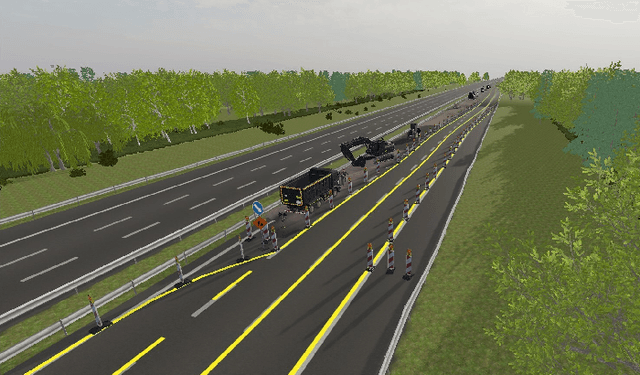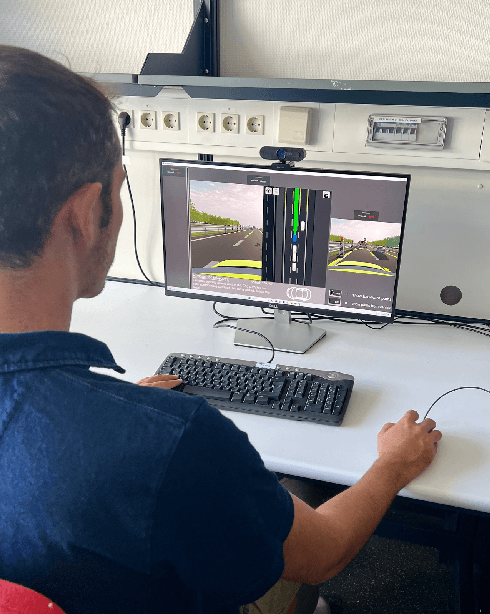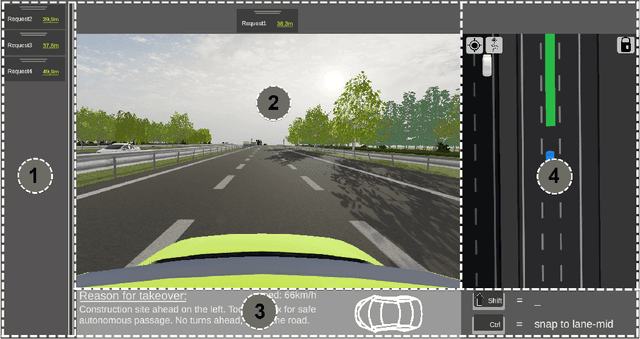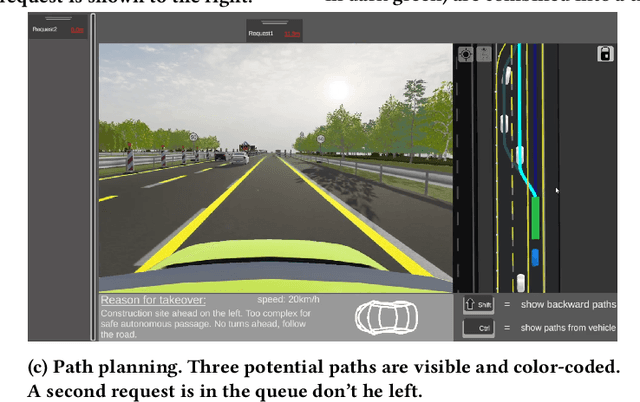Alexander G. Mirnig
Introducing ROADS: A Systematic Comparison of Remote Control Interaction Concepts for Automated Vehicles at Road Works
Feb 18, 2025



Abstract:As vehicle automation technology continues to mature, there is a necessity for robust remote monitoring and intervention features. These are essential for intervening during vehicle malfunctions, challenging road conditions, or in areas that are difficult to navigate. This evolution in the role of the human operator - from a constant driver to an intermittent teleoperator - necessitates the development of suitable interaction interfaces. While some interfaces were suggested, a comparative study is missing. We designed, implemented, and evaluated three interaction concepts (path planning, trajectory guidance, and waypoint guidance) with up to four concurrent requests of automated vehicles in a within-subjects study with N=23 participants. The results showed a clear preference for the path planning concept. It also led to the highest usability but lower satisfaction. With trajectory guidance, the fewest requests were resolved. The study's findings contribute to the ongoing development of HMIs focused on the remote assistance of automated vehicles.
 Add to Chrome
Add to Chrome Add to Firefox
Add to Firefox Add to Edge
Add to Edge